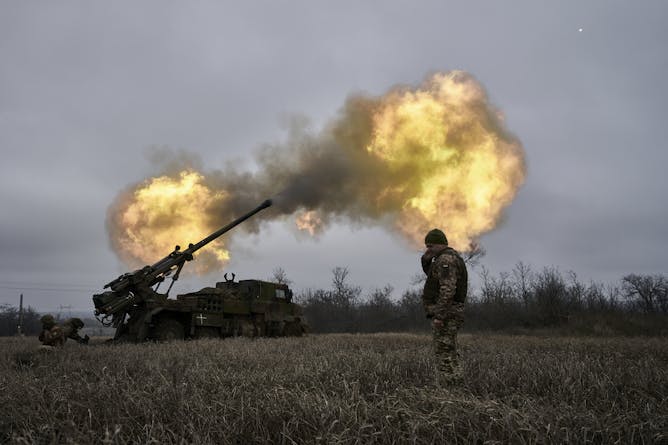|
Top headlines
Lead story
For soldiers manning heavy artillery, standing behind the gun is almost as dangerous as looking down its barrel.
Back in November, The New York Times reported on the strange symptoms of U.S. soldiers who had served in artillery battalions in the Middle East. After returning stateside, some of them started experiencing hallucinations, emotional distress, depression and nightmares. It turns out they had likely experienced blast-induced traumatic brain injuries, which, in some cases, weren’t identified until post-mortem analyses.
University of Wisconsin-Madison engineers Alice Lux Fawzi and Christian Franck have been working to shed light on the evolving science behind invisible brain trauma from gun blast exposure.
In a nauseating kind of way, it makes sense: It takes an enormous amount of force to propel a 24-pound warhead out of a howitzer to hit a target several miles away. So it stands to reason that the harm this force inflicts can be bidirectional. The two hope that a better understanding of the mechanism behind how brain cells die from blast pressure can help protect against their destructive effects.
[ Science from the scientists themselves. Sign up for our weekly science email newsletter. ]
|

|
Vivian Lam
Associate Health and Biomedicine Editor
|
|

Low-level blasts can cause physical changes in the brain.
Libkos/AP Photo
Alice Lux Fawzi, University of Wisconsin-Madison; Christian Franck, University of Wisconsin-Madison
The people manning the guns are also at risk of injury from the force of the weapon.
|
Economy + Business
|
-
Christine P. Bartholomew, University at Buffalo
Turning two big supermarket companies into one even larger one could harm consumers and workers, the government says.
|
|
|
|
Environment + Energy
|
-
Kathleen Merrigan, Arizona State University
A new UN report finds that the true global cost of producing food is $12.7 trillion more than consumers pay at the checkout counter. We pay those uncounted costs in other ways.
-
Chris Vagasky, University of Wisconsin-Madison
A new study shows how often lightning strikes and how it behaves, often hitting the ground with multiple strikes from the same flash.
|
|
Science + Technology
|
-
Matthew Robison, University of Texas at Arlington
Setting specific, hard-to-reach goals seems to help people maintain motivation, while preventing them from feeling as drained by mental tasks.
-
Leah McCoy, Wake Forest University
People young and old love the classic video game Tetris. A working knowledge of the spatial reasoning concepts underlying Tetris can set students up for success in mathematics.
|
|
International
|
-
Augustine Aboh, University of Massachusetts
Nigeria is beset with security threats. Confronting them will take regional and international cooperation.
-
Shan-Jan Sarah Liu, The University of Edinburgh; Li-Yin Liu, University of Dayton
Taiwan’s presidential candidates failed to address women’s interests and resonate with women voters.
|
|
Politics + Society
|
-
Michael Traugott, University of Michigan
Organizers of the protest had set a goal of 11,000 uncommitted votes to show dissatisfaction with Biden’s support of Israel in the Israel-Hamas war.
-
Bryan Keogh, The Conversation
Congress is again on the brink of a government shutdown only 3½ months after the last close call.
-
Ismar Volić, Wellesley College
There are many ways bad mathematics interferes with our democracy. Assigning delegates is just one example.
-
Karyn Amira, College of Charleston
In a general election, most people will vote for their party’s candidate. But in a primary, voters rely on media coverage to help them choose among candidates. And that gives the media influence.
|
|
|
|
|
|
| |
| |
| |
| |
|
|